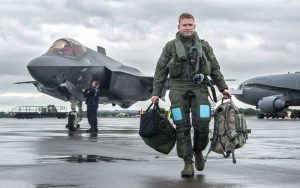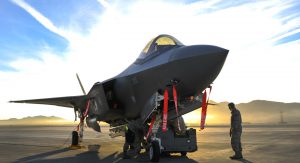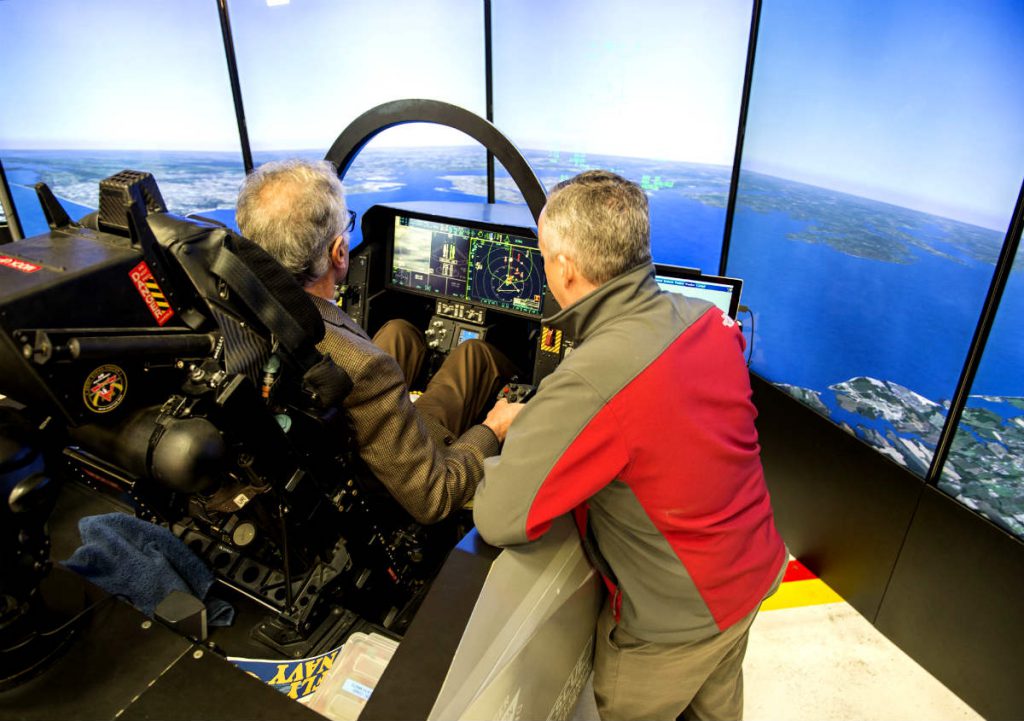The F-35 Lightning II Joint Strike Fighter
The F-35 Lightning II Joint Strike Fighter is more than just the most expensive weapons procurement program in world history. The goal is to bring science fiction to life and field the most advanced, game-changing combat aircraft capable of dominating the battlefield for generations to come. Despite the ample controversies, cost overruns and technical setbacks marring the F-35’s Joint Strike Fighter development, the Pentagon remains committed to rapidly fielding this high-tech war machine as quickly as possible. Even to the extent of shifting some funds away from maintaining current fighters and into procuring new F-35 Lightning aircraft.

Current Status
The F-35 program is quite unique, since full scale production is proceeding simultaneously with late-stage research and development. This approach is intended to reduce costs, under the assumption that it will be cheaper to upgrade an existing basic aircraft than to design a “perfect” one from scratch. As of January 2017, two of three variants are certified as “combat ready” by the US Air Force and US Marine Corps. U.S. Air Force F-35A standard takeoff & U.S Marine Corps F-35B vertical take off/landing are combat ready. The ‘C’ version is designed for carrier use for the US Navy and is not cleared for combat. In addition, the current fleet of 200 fighters have amassed more than 70k cumulative flight hours. There are 300 pilots trained to operate these futuristic warbirds.

Revolutionary Design
The F-35 Lightning’s most gamechanging feature isn’t its multi-role versatility nor even extreme stealth capabilities, but rather its next-generation, fully networked avionics systems. Equipped with a powerful AN/APG-81 Active Electronically Scanned Array radar, classified Advanced Electro-Optical Targeting System (EOTS), custom designed AN/ASQ-239 Barracuda electronic warfare system and AN/AAQ-37 Distributed Aperture System, among many other advanced features, the F-35’s sensors provide unprecedented 360 degree situational awareness. Both in the air and on the ground, as well as across most of the electromagnetic spectrum.
Full Mission Systems Coverage
Besides performing as an impressive reconnaissance aircraft in and of itself, the Lockheed Martin Joint Strike Fighter automatically communicates with every available land, sea, air and space sensor within range to gather and share new intelligence in real-time. According to Lockheed Martin, this seamless “fusion” of so many different sensors and communications systems requires more lines of code than the Space Shuttle’s operating system.
Unique Capabilities
When it comes time to put all this electronic power to use, an F-35 operator has several advantages over legacy fighter crews. Six high-res, infrared cameras outside the aircraft augment the electronic sensors and feed a real-time augmented reality display to the pilot’s helmet visor. This allows the operator to “look through” the plane’s frame, then simply point and shoot at any target without altering the aircraft’s course.
Next-Generation Combat
In fact, the targeting pod is so advanced that it can engage up to 50 high-speed targets at beyond visual range, including aircraft and ground vehicles. The F-35’s onboard AI system automatically sorts all available targets for destruction based upon the threat they pose to the aircraft or to fulfill the mission objective. Furthermore, it prepares a firing solution for each threat using the appropriate munitions on board. In theory, to engage a target all the pilot has to do is simply agree to weapon’s release and the computer handles the rest.

Performance
Breaking with aerial warfare tradition, the Joint Strike Fighter isn’t a particularly nimble aircraft. Compared to the fourth generation F-16 and F/A-18 fighters it’s replacing, the JSF is slower and less maneuverable in many circumstances. The F-35’s poor “dogfighting” skills were highlighted in an infamous 2015 exercise when a base model JSF was easily defeated by an older F-16D in close quarters combat drills. Propelled by only a single engine, the relatively heavy F-35 Lightning also lacks the supercruise ability and high thrust-to-weight ratio of the F-22 Raptor. Still, in the words of one senior project manager that witnessed the wargame:
“[Comparing dogfighting capabilities between the F-35 and F-16] is an apples to oranges comparison. If an enemy aircraft even gets within visual range of an F-35 Lightning, then something went seriously wrong.”
Ease of Maintenance
An often overlooked force multiplier in the F-35’s design is its streamlined ground maintenance procedures. In particular, 95% of the JSF’s field-repairable parts can be replaced without having to dismantle another component of the plane. Combined with an extensive network of internal sensors and self-learning diagnostic computers, F-35s should be able to maintain a much higher sortie rate than most legacy fighters. Reducing maintenance downtime, even by a small amount, would be a massive tactical and strategic advantage during sustained combat operations.
Compare the F-35 Lightning II vs F-22 Raptor.
Compare the F-35 Lightning II vs F-16 Fighting Falcon.
See more remarkable images of the F-35 Lightning II.
See F-35 Specifications
| Length: 50.5 feet (15.67 m) |
| Height: 14.2 feet (4.33 m) |
| Wingspan: 35 feet (10.7 m) |
| Max Speed: Mach 1.6 (1,200 mph, 1,930 km/h) |
| Ceiling: 65,000 feet (19,697 m) |
| Maximum Takeoff Weight: A model: 70,000 lb (31,800 kg) |
| Combat Range: 1,200 nmi (2,220 km) on internal fuel for max stealth |
| Armament: 1x GAU-22/A four-barrel cannon, maximum 18,000 lbs of ordnance |
| Crew: One |
| Unit Cost: A-model: $91 million (FY 2018 full production), B/C-models: $122 million (FY2017 low rate initial production) |

